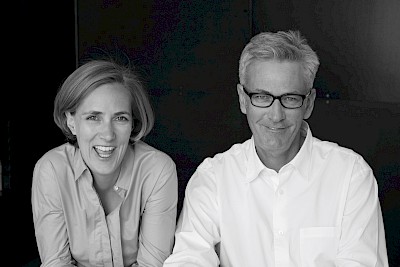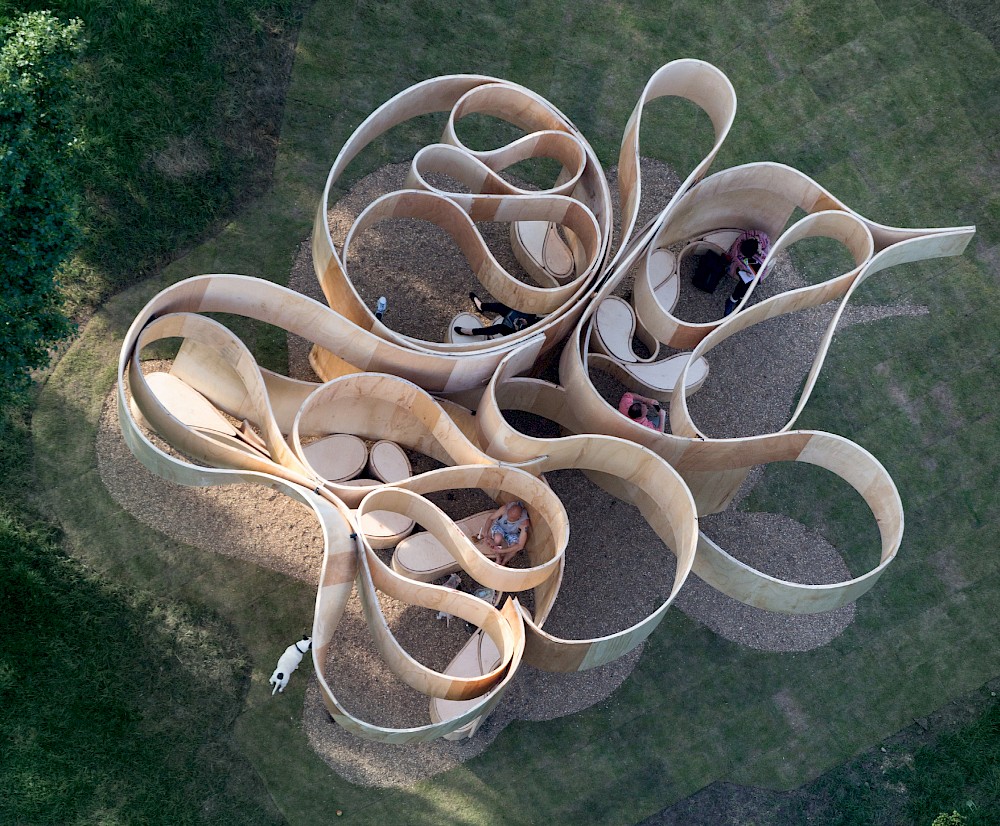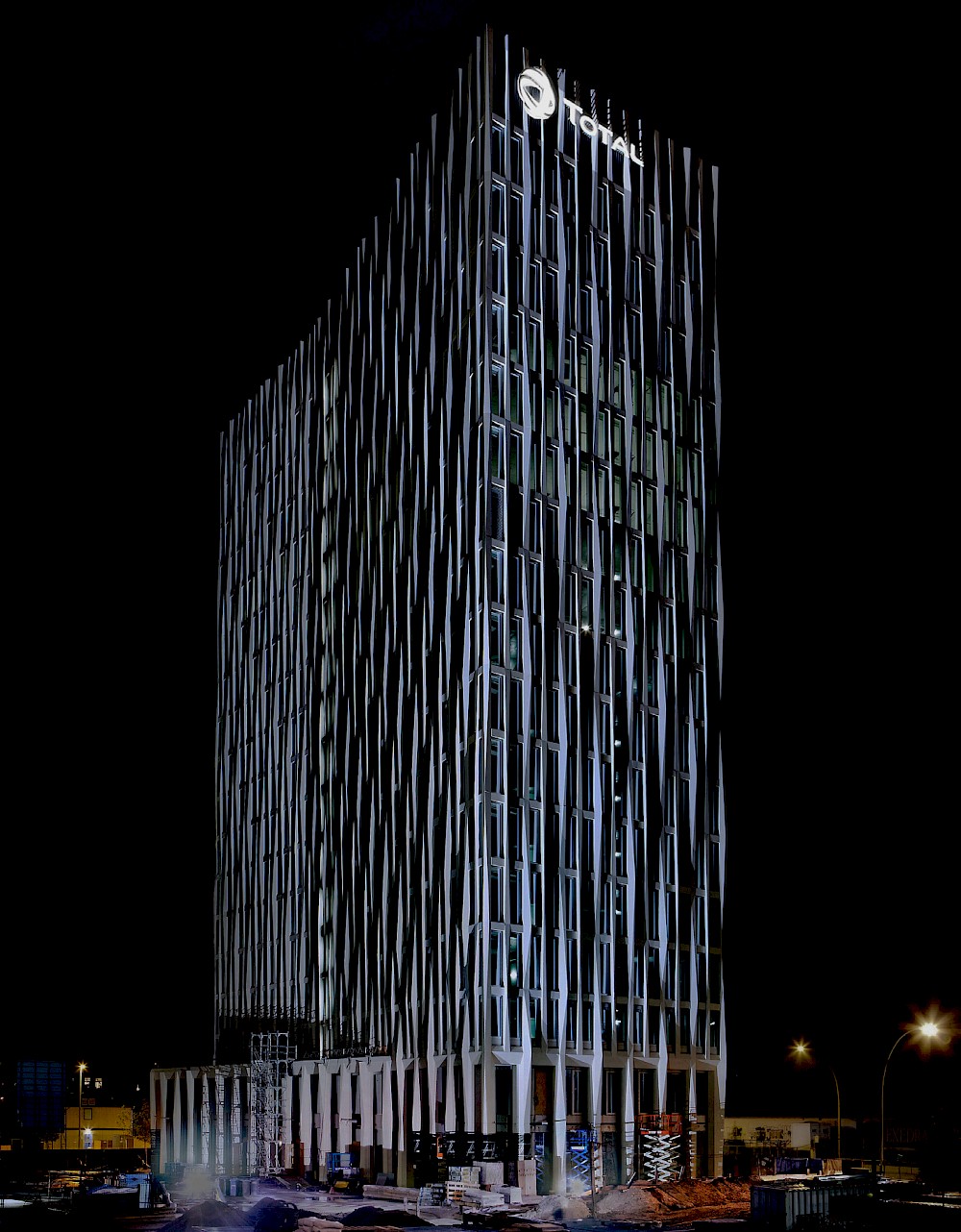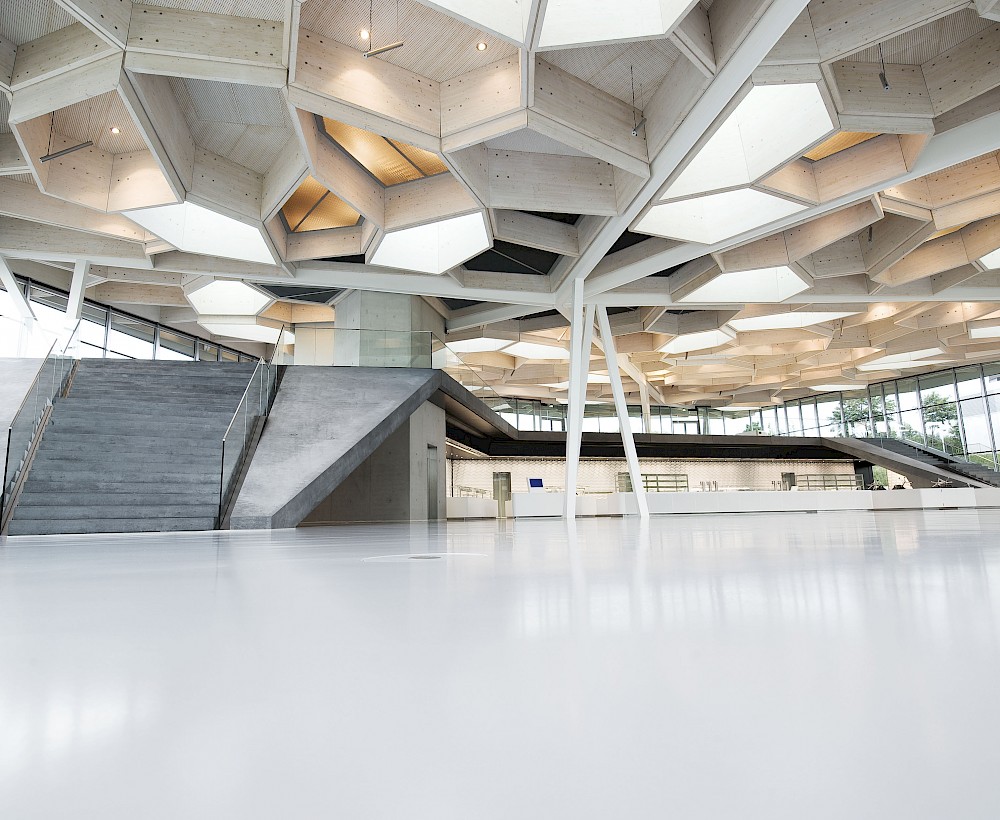BIENNIAL PROJECT
Housing History: Three Residential Towers
Barkow Leibinger’s first built works in the 1990s were a series of factory projects for various companies on the periphery of a rebuilding Berlin. In their research for these projects they looked at the modernist history of manufacturing and industry; they also looked into the technologies of their clients and found in them a series of under-explored techniques and materials to introduce into architecture. Such an approach led art historian Hal Foster to describe their practice as a type of bricollage; they collect expertise with each project and interaction as it arises. Barkow Leibinger’s contribution to the 2017 Chicago Architecture Biennial springs from three historical precedents that offer qualities and indications for three new housing towers shown in model form. Firstly, they depart from site-specific artists Nancy Holt and collaborator Robert Smithson’s early video work Swamp, where Holt and Smithson navigate the spatial variations of marsh reeds. This video influenced the development of Thicket, which tested the structural and spatial potentials of two millimeter wire and wire bending technologies. Secondly, they were inspired by Soviet modular plattenbau constructive systems that revive industrial logic through insulated concrete that combines fire proofing, insulation, and structure into a repetitive panel with a particular freedom of expressive articulation. Thirdly, the folk project of rough-hewn timber, Heinrich Tessenow’s 1936 Festhalle in Frankfurt, is duplicated vertically. These three material systems emerge out of an observation of precedent, but produce divergent material intelligences that can only come from material tests.
BIO
Barkow Leibinger is an American German architectural practice, founded in 1993, based in Berlin and New York. The office has internationally realized buildings of a wide-range of scales and types including building for workplace (industry, office, and master-planning), culture, housing, events, exhibitions, and installations in the public realm. Their discursive research-based approach to architecture and design allows the work to respond to advancing knowledge and technology, locating the practice as an international leader in digital and analogue fabrication techniques. This skill set expands to include new materials and applications that drive the practice forward as a continuously evolving activity. This focus revolves around a commitment to academic teaching, research, and the practice itself: each are autonomous work areas that simultaneously inform each other beneficially. This is an approach that distinguishes each project as distinct in relationship to client and architect dialogue, location, aesthetic, and purpose.







